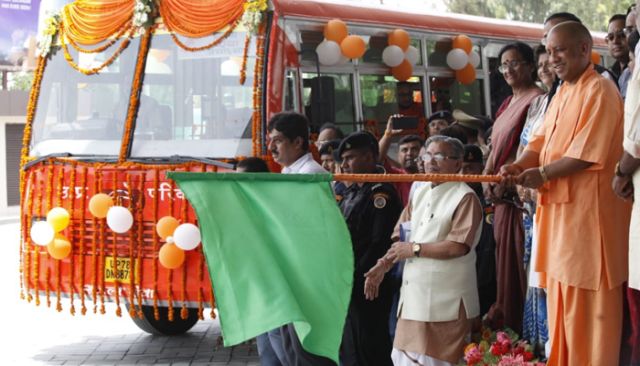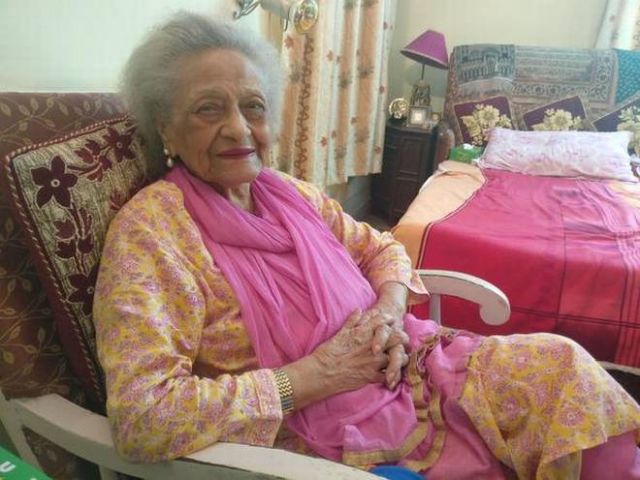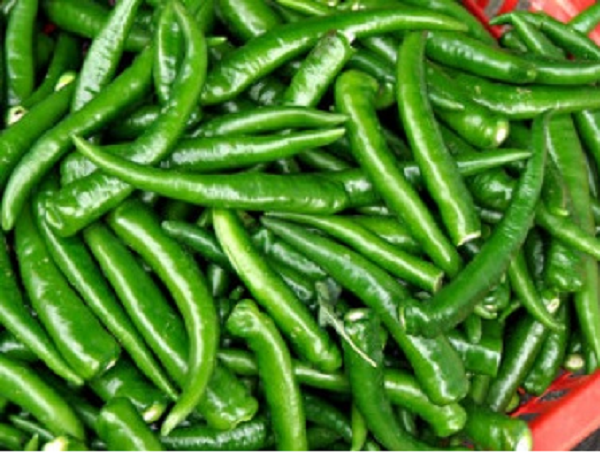
by admin | May 25, 2021 | Entrepreneurship, Interviews, Success Stories

Imtiaz Qureshi
By Siddhi Jain,
New Delhi : What began as a nine-year-old’s venture at Krishna Caterers about eight decades ago in the city of Nawabs turned into an awe-inspiring, lifelong affair with cuisine. Imtiaz Qureshi, a widely admired and adored figure in the Indian culinary space, has served lip-smacking delicacies to several heads of state and government, and other luminaries.
The 87-year-old chef, in an interview to IANS, revealed that he took the culinary plunge at a very early age. Reminiscent of all things synonymous with the bygone era, the times that Qureshi was growing up in were very different from the fast-paced lifestyle of today. He comes from a family of Lucknowi chefs and was brought up amid intense fondness for Indian cuisine.
“Jis zamane mein humne aur humare baap dadao ne kaam shuru kiya, us zamane mein shaadiya five star mein nahi hoti thi. Baarat ghar pe aati thi, chaahe voh jhopde ke andar ho ya mahal ke andar. Tent shamiyane, tamboo yahi lagte the, aur ussi maidan mein khana bhi banta tha,” he recalled, pointing out that there were no five star hotels during those days and marriages used to be held at homes, whether it was a hut or a palace.
And food — for all intents and purposes– is central to Indian marriages. So here was young Qureshi cooking at Krishna Caterers in Lucknow, hopping from one marriage to another and charming the appetite of his customers.
His salary was barely Rs 100 but the young lad had little to bother for one could buy a complete meal at just one or two rupees during those days. “Even after spending a significant amount of money to buy a meal for just one person, there is little satisfaction to one’s taste buds today,” he lamented.
But destiny had greater plans for the chef-in-the-making. As it turned out, Krishna Caterers used to serve food to the then Chief Minister of Uttar Pradesh, Chandra Bhanu Gupta, who served three terms.
What followed is vividly scripted in his memory. One introduction led to the next and, along the journey, Qureshi began scaling heights in the culinary world, reviving a taste for regal dishes.
His name would soon be at the tip of the tongues of influential political leaders.
“When I worked for Krishna Caterers in Lucknow, Jawaharlal sahab (former Prime Minister Jawaharlal Nehru) used to frequent Uttar Pradesh a lot. We were hired to serve him,” he said.
Taking us back into the dining room of Chandra Bhanu Gupta, he recalled that once during Nehru’s visit, he was instructed to prepare a vegetarian meal for him, President Zakir Hussain and Prime Minister Indira Gandhi.
The then young chef racked his brains and cooked vegetarian dishes, which, at least in appearance and odour, resembled the opposite. Bottle gourd and jackfruit was used to prepare dishes which looked like “fish musallam” and “murgh musallam”.
“When the table was set, Nehruji read the menu aloud and exclaimed about the ‘daawat’ (feast). There was a moment of panic and I was summoned, when I spilled the beans about the trick, leading to a good laugh about my ‘gustaakhi’ (mischief),” the maven quipped.
Qureshi, a retired grand master chef at ITC Hotels, is primarily known for reinventing “Dum Pukht” and “Dal Bukhara”.
Elaborating, he said that the former, a process of slow-cooking in a sealed “handi”, is something that needed research to be revived, requiring him to even pore over old Urdu manuscripts for the recipes, while the latter, another slow-cooking process, allows ingredients to simmer over coal fires for hours at a stretch.
The taste of dishes prepared by these methods has millions of fans but the experience of serving nawabs, maharajas, presidents and prime ministers is something not every chef gets. It has indeed been an incredible journey for Qureshi, who today sports a long moustache, complimenting his full, grey beard.
The chef, a recipient of the Padma Shri, will be the chief guest for the upcoming Hotels, Restaurants and Catering (HRC) Expo 2018, scheduled to take place from August 31 to September 2 in Bengaluru.
The HRC Expo will comprise competitions like “Individual Cold Display”, “Plated Appetizers”, “Artistic Bakery Showpiece”, “Butter Margarine Sculptures”, and “Battle of Biryani”, among others. Panel discussions featuring eminent chefs will be a key highlight of the Expo.
His stint with the ITC group of hotels began in 1977. He was encouraged to research forgotten recipes from the Mughal era. For several years that followed, Qureshi worked on perfecting such recipes. He retired as the Grand Master chef at ITC in February 2017.
(Siddhi Jain can be contacted at siddhi.j@ians.in)
—IANS

by admin | May 25, 2021 | Business, Corporate, Corporate Buzz, Economy, Emerging Businesses, Investing, Markets, News, Technology
 Lucknow : Uttar Pradesh Chief Minister Yogi Adityanath on Tuesday inaugurated a first-of-its-kind, hi-tech Rs 232 crore bus terminal here and announced that 21 more bus stations and bus shelters across the state will be spruced up in coming days.
Lucknow : Uttar Pradesh Chief Minister Yogi Adityanath on Tuesday inaugurated a first-of-its-kind, hi-tech Rs 232 crore bus terminal here and announced that 21 more bus stations and bus shelters across the state will be spruced up in coming days.
As a token start to the bus services from the Alambagh bus terminal, he also flagged off two buses to the Swami Narayan temple in Ayodhya.
Buses for commuters will be thrown open from Wednesday when, under the first phase, 395 air-conditioned buses will start plying from this bus terminal.
Officials said buses for Gorakhpur (30), Varanasi (14), 94 luxury buses for Delhi and Agra as well as normal service buses (306) for Varanasi, Allahabad, Jhans, Hardoi and Etawah will ply from this terminal.
Speaking on the occasion, Adityanath said his government had made travel free for differently abled on any state-owned bus running anywhere in the country and have also made travel on the festival of ‘Raksha Bandhan’ free for girls and women of Uttar Pradesh.
Work on the bus terminal started in 2012 during the Samajwadi Party (SP) regime and party workers inaugurated the terminal symbolically late on Monday, having accused the ruling BJP of trying to hijack the good work done by the Akhilesh Yadav government.
The terminal is linked with Metro services, has five lifts and has a shopping mall, an official told IANS. It has an air-conditioned food court, a theatre, ATMs, an AC waiting room, luggage scanners and a passenger capacity of 25,000 at a given time.
Other than the facility of parking 50 buses on the ground level, there will be space to park 50 buses in an underground parking.
—IANS

by admin | May 25, 2021 | Books, Entrepreneurship, Interviews, Women Entrepreneur
 By Nivedita Singh,
By Nivedita Singh,
New Delhi : Mutual respect was a “consciously cultivated way of life” in Lucknow, and this “magic formula” helped the city and the Awadh region around it to prosper. Alas, this is not the case any more, says journalist and author Mehru Jaffer, who has just published a book on the city where she has her roots.
In what manner has the scenario changed?
“Respect for the other was a consciously cultivated way of life in Lucknow. It was state policy not to fan hate and differences amongst human beings. This was the magic formula that made this city and the region around it so wealthy. When people trusted each other, they traded without fear and prospered unimaginably.
“Only when there is friendship, trust and inter-dependency amongst human beings do markets boom. When there is murder and loot in public places and in the market square, then shutters come down, the streets are deserted and businesses of ordinary citizens suffer,” Jaffer told IANS in an interview.
Is that why she writes in “Love and Life in Lucknow: An Imaginary Biography of a City” (Niyogi Books/pp 199/Rs 395) that the city is “economically and politically bankrupt today”?
At one time, “this part of the fertile Indo-Gangetic plains was economically self-sufficient. It was the bread basket of the region. A gunj, or treasure house, or granary filled with food. That kind of wealth is what made it politically important.
“Today, political power is centralised. All roads lead to the political capital of Delhi. Agriculture (is) in a state of neglect and all those human beings who used to earn a living from farming are reduced to the status of beggars and paupers. The priority of present-day development is weird. The human being is pushed to the periphery and replaced by slogans. The human being no longer seems to matter. There is no shame any more in watching other human beings beg, starve and die without a home.”
What kind of human beings will stalk the earth, what will be left to eat, what will be there to drink in a few decades is something that is worrying, she added.
Is this the thought process that led to the book being written?
Jaffer prefaced her reply by noting that she grew up with the world telling her that Lucknow is “different”, that people in Lucknow are different and that “I am nicely different in my speech and in my food habits from others in the country”.
“Over time, a desire came over me to find out what is so different about Lucknow. At some stage of my adult life I began to live consciously in Lucknow, reading, writing and observing the city and its citizens for decades, till I felt ready to put down my experiences in a book,” she said.
“There are numerous books on the 18th and 19th century history of Lucknow. This is the most glorious period of the city. After having studied the period thoroughly, I felt like moving on and writing about Lucknow as it is today and to tell stories of the people who live in the city now, without of course denying its past,” Jaffer explained.
She also tried to experiment with language by thinking in the very sensual, poetic spirit of the Urdu language but telling the story in English.
“The many characters in the book have been assembled from different recesses of the region, from its imaginary past to records preserved in archives and history books. Portraits have been pulled out from the present in the hope that the varied experiences of others may help us to find a clue or two on how to treat other human beings with more respect in the future,” Jaffer writes in the Introduction.
She, however, ended on a positive note, hoping that Chief Minister Yogi Adidyanath, would be as caring as some of his spiritual ancestors.
“He will only be loved if he is seen to care for every citizen of Uttar Pradesh and not embrace just those belonging to his caste and creed. It is the sacred duty of all great yogis to practise love for all human beings and to provide justice for all. I wait for this yogi to be as truthful, gentle and magnanimous as spiritual leaders are expected to be,” Jaffer said.
(Nivedita Singh can be contacted at nivedita.singh@ians.in)
—IANS

by admin | May 25, 2021 | News, Politics

Begum Hamida Habibullah (file photo)
Lucknow : Former UP minister and one of the most popular faces in the state capital, Begum Hamida Habibullah passed away here on Tuesday morning. She was 102, family sources said.
Daughter of the late Nawab Nazir Yar Jung Bahadur, Chief Justice of the Hyderabad High Court, Begum Hamida was a front-ranking social worker known to the land of Avadh.
Married to Major General Inayat Habibullah, founder commandant of the National Defence Academy, Khadakwasla, Pune.
She joined active politics in 1965 after her husband’s retirement. Begum Hamida served as an MLA from Haidergarh (Barabanki) and was state minister of social and Harijan welfare, national integration and civil defence from 1971-73 and tourism minister from 1971-74.
She was also a member of the Executive Committee of Uttar Pradesh Congress Committee (UPCC) till 1980 and an elected member of the All India Congress Committee (AICC) from 1969.
Begum Hamida served as the president of Mahila Congress, UPCC, from 1972-76 after which she was a member of the Rajya Sabha from 1976 till 1982, a relative informed.
Her burial will take place later on Tuesday at Saidanpur, her native village in Barabanki.
—IANS

by admin | May 25, 2021 | Commodities, Commodities News
 Lucknow, (IANS) They are ‘hot’ by all standards and they are much in demand. Green chillies from Uttar Pradesh are reportedly flying off the shelves in European supermarkets.
Lucknow, (IANS) They are ‘hot’ by all standards and they are much in demand. Green chillies from Uttar Pradesh are reportedly flying off the shelves in European supermarkets.
It’s not just the succulent mangoes of the state, its green chillies too are now wowing people abroad and exporters here are smiling all the way to the bank.
Time was when green chillies from Uttar Pradesh were sent on a “trial basis” to some European and Arab nations. But now exporters are receiving orders from other regions too.
With orders for the chillies pouring in thick and fast, exporters are busy packaging consignments for markets in Germany, the Netherlands, Italy and England.
“We buy these chillies straight from the farmers and then clean, grade and package them for export,” Ramanand Barai, managing director of Khushi International, a Mumbai-based export house, told IANS.
Chillies of various varieties — soldier, Gomti, 917 and divya jyoti — are purchased from places like Kursi Road, Dewa and Malihabad, and then packed at Rehman Kheda here before being sent to Amausi airport for shipment. “The daily pick is of about two tonnes,” a market-watcher said.
With international, especially European, standards on food quality and safety increasingly becoming stricter, adequate care has been taken to ensure that all parameters, including bio-safety and use of pesticide, are within the prescribed limits.





